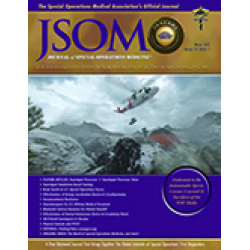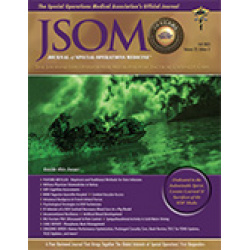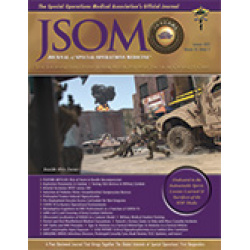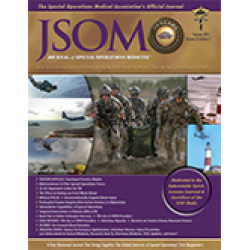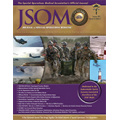Latest Products
Autopsy-Determined Atherosclerosis in Elite US Military Special Operations Forces
Kotwal RS, Mazuchowski EL, Howard JT, Hanak JC, Harcke HT, Gurney JM, Shackelford SA 21(2). 19 - 24 (Journal Article)
Background: Autopsy studies of trauma fatalities have provided evidence for the pervasiveness of atherosclerosis in young and middle-aged adults. The objective of this study was to determine the prevalence of atherosclerosis in elite US military forces. Methods: We conducted a retrospective study of all US Special Operations Command (USSOCOM) fatalities from 2001 to 2020 who died from battle injuries. Autopsies were evaluated from Afghanistan- and Iraq-centric combat operations for evidence of coronary and/or aortic atherosclerosis and categorized as minimal (fatty streaking only), moderate (10-49% narrowing of ≥1 vessel), and severe (≥50% narrowing of ≥1 vessel). Prevalence of atherosclerosis was determined for the total population and by subgroup characteristics of age, sex, race/ethnicity, combat operation, service command, occupation, rank, cause of death, manner of death, and body mass index (BMI). Results: From the total of 388 USSOCOM battle injury fatalities, 356 were included in the analysis. The mean age was 31 years (range, 19-57 years), and 98.6% were male. The overall prevalence of coronary and/or aortic atherosclerosis was 17.4%. The prevalence of coronary atherosclerosis alone was 13.8%. Coronary atherosclerosis was categorized as minimal in 1.1%, moderate in 7.6%, and severe in 5.1%. Of those with atherosclerosis, 24.2% were <30 years old, 88.7% were from enlisted ranks, and 95.2% had combatant occupations. When BMI could be calculated, 73.5% of fatalities with atherosclerosis had a BMI ≥25. Conclusions: Autopsy-determined atherosclerosis is prevalent in elite US military Special Operations Forces despite young age and positive lifestyle benefits of service in an elite military unit.


 Español
Español 